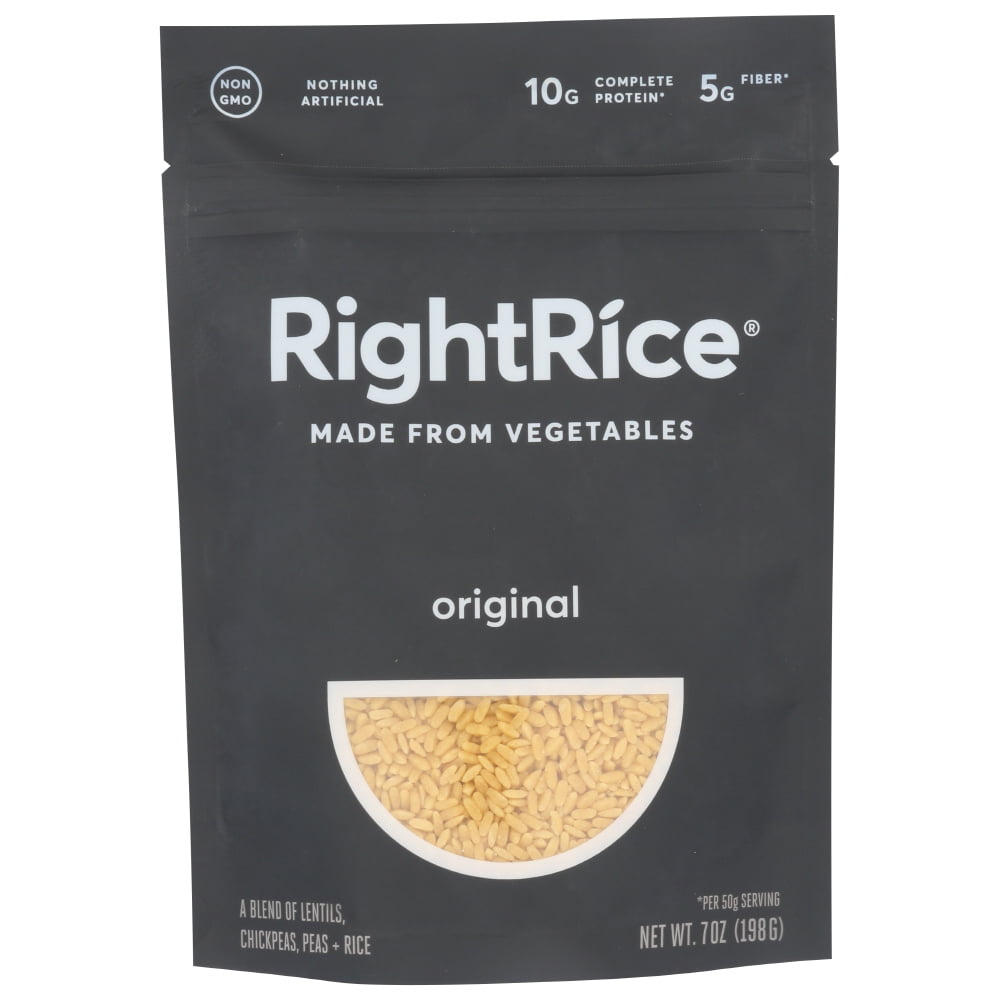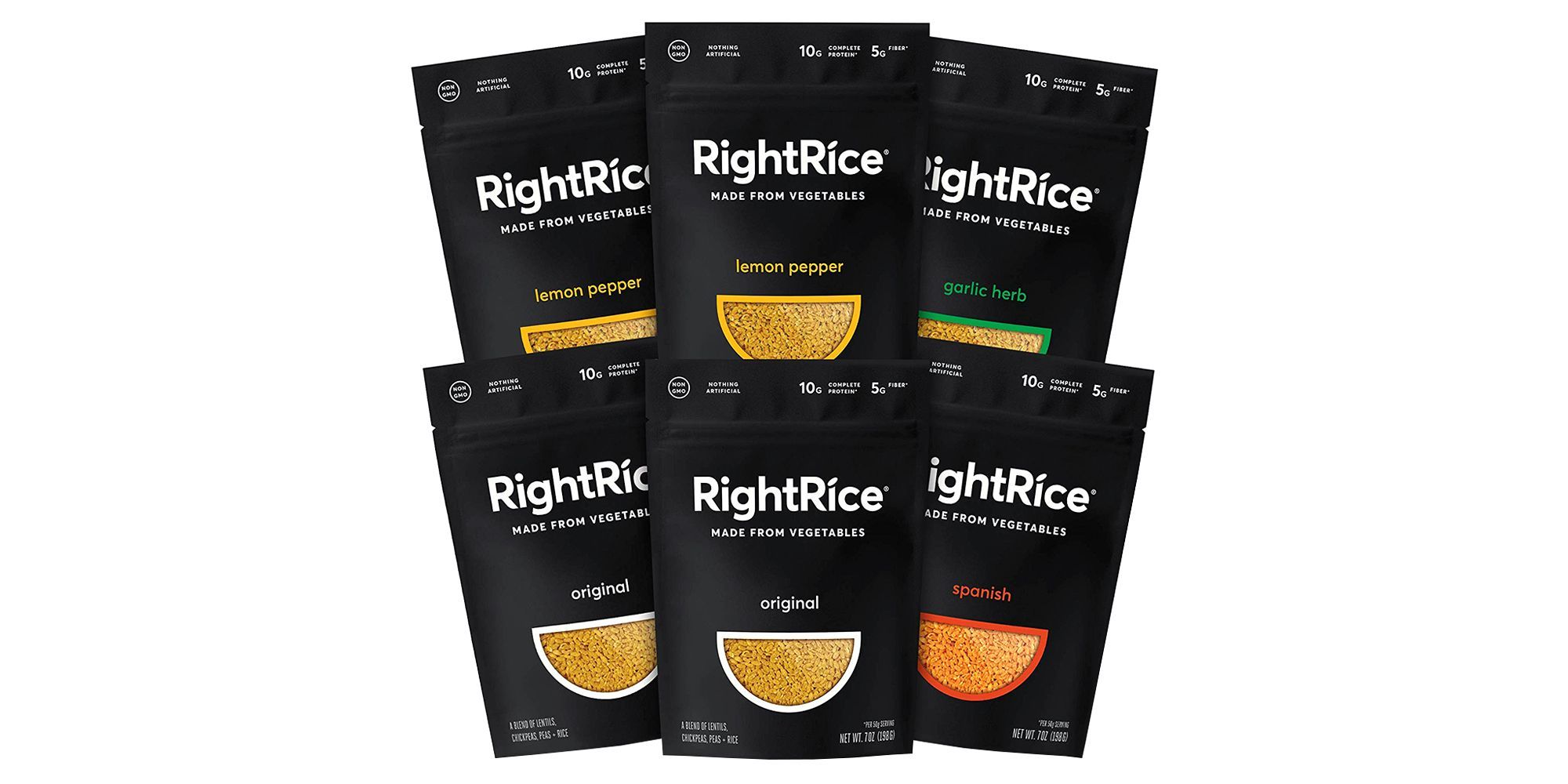Rightrice: The Vegan, Gluten-Free Lentil, Chickpea & Pea Rice Alternative
Is it possible to revolutionize a staple food, transforming it into something both nutritious and convenient? Rightrice, a dry grain crafted from a unique blend of lentils, chickpeas, peas, and rice, boldly claims to have achieved just that: a healthier, faster, and more versatile alternative to traditional rice.
The culinary landscape is constantly evolving, with health-conscious consumers seeking out foods that offer more than just sustenance. The market is flooded with products promising improved nutritional profiles and convenience, but few manage to deliver on both fronts with such apparent simplicity. Rightrice positions itself as a game-changer, a foundational ingredient reimagined for the modern lifestyle. It's a dry grain, a blend of humble ingredients lentils, chickpeas, peas, and rice and the promise of a healthier, more efficient way to enjoy a familiar staple. But does it live up to the hype? Does this innovative grain, readily available and boasting a compelling nutritional narrative, truly hold the key to a better bowl of rice?
Before diving deeper into the details, let's consider the core attributes of this innovative product. The ingredient list itself is a testament to its focus on wholesome, plant-based components: lentils, chickpeas, peas, and rice. This meticulously selected combination allows Rightrice to distinguish itself from its more conventional counterparts, with claims of enhanced protein, fiber, and reduced carbohydrate content. The absence of preservatives, fillers, and undisclosed secrets further underscores its commitment to transparency and quality.
Rightrice is presented as a readily available and easily prepared product, offering a variety of flavor blends. The speed of cooking, often a significant factor for busy individuals, is also a key selling point, with cooking times purportedly shorter than those required for regular rice. The product's versatility also lends itself to a wide array of culinary applications, further enhancing its appeal to consumers seeking a versatile, health-conscious ingredient. However, as with any new food product, potential drawbacks, such as taste and price, deserve careful consideration.
Let's analyze the product and understand its nutrition facts in a tabular form:
| Attribute | Details |
|---|---|
| Product Name | Rightrice |
| Main Ingredients | Lentils, Chickpeas, Peas, Rice Flour |
| Key Claims | Higher Protein, Higher Fiber, Lower Carbs than regular rice, Vegan, Gluten-Free |
| Cooking Time | Around 10 minutes |
| Serving Size | 0.33 cup dry (50 g) |
| Flavor Availability | Variety pack of six flavors, original flavor blends |
| Vegetable Content | Over 90% (including lentil flour, chickpea flour, and pea fiber) |
| Additional Information | No preservatives, no fillers |
The geographical reach of Rightrice includes the United States and Canada. It can be ordered from Sheridan Road Chicago IL 60640 USA. The Canadian address is c/o Bentall 5 550 Burrard Street, Suite 1008.
To understand the potential of Rightrice, it is important to first understand the traditional competitor. White rice, a staple in countless cuisines, primarily offers carbohydrates, with a relatively low amount of protein and fiber. This makes it a quick source of energy but also contributes to rapid spikes in blood sugar levels and limited nutritional benefits. Compared to traditional white rice, Rightrice boasts more protein and fiber. This shift towards a higher protein and fiber content could contribute to enhanced satiety and more stable blood sugar levels. The reduction in net carbs is another significant advantage, offering a potential benefit for individuals managing their carbohydrate intake.
The cooking process, often a critical factor in meal preparation, is designed to be straightforward. Rightrice is designed to cook in approximately 10 minutes. For the entire pouch, it is recommended to use 1 1/3 cups of water. (or, 1 cup water for each cup of rightrice®).
The blend of lentils, chickpeas, and peas provides essential nutrients, along with protein and fiber. The inclusion of vegetables ensures that Rightrice is packed with essential vitamins and minerals. This combination offers a more complete nutritional profile than many traditional rice varieties.
While the nutritional advantages are compelling, the taste and texture are crucial aspects of any food product. Rightrice aims to offer a delicious and satisfying experience that will make it a staple in any kitchen. The availability of original flavor blends suggests an attempt to broaden its appeal. The versatility is another advantage, indicating that Rightrice can be used in place of traditional rice in a multitude of recipes. From side dishes to main courses, Rightrice adapts to a variety of culinary applications.
It is important to assess the potential drawbacks associated with Rightrice. Price and taste are the two primary concerns raised by consumers. The price of any product can affect its market penetration and accessibility. Taste perceptions are subjective, and some customers may find the flavor profile of Rightrice less appealing than that of conventional rice. The texture is also crucial to the eating experience, and any perceived difference could impact consumer acceptance. It is worth noting that, despite these concerns, the manufacturers of Rightrice appear confident in the product, as evidenced by the range of flavor blends and claims of enhanced nutrition and ease of use.
Rightrice's potential extends beyond its nutritional benefits. The environmental impact of food production is increasingly important, and sustainable practices are gaining traction. By incorporating lentils, chickpeas, and peas, Rightrice has the potential to lessen the overall environmental impact of rice consumption. The use of ingredients such as legumes that require less water and have a lower carbon footprint offers a sustainable advantage.
The marketing of Rightrice emphasizes its versatility, ease of use, and health advantages. The goal is to capture the attention of health-conscious consumers who want to manage their carbohydrate intake. The claim of more protein and fiber and fewer net carbs is central to the marketing message. The product aims to be a compelling alternative for individuals seeking a quick, easy-to-prepare, and nutritious food. Its vegan and gluten-free designation also expands its appeal to broader consumer groups.
Rightrice has an address based in the USA and Canada. The products availability in multiple markets helps to show how the product is gaining recognition. Rightrice is made from a blend of lentils, chickpeas, and peas, ensuring that it is packed with essential nutrients. The product is also made without the use of preservatives or fillers. The ingredient list is designed to create trust with consumers. The product claims to offer five times the fiber and almost 40% fewer net carbs than a bowl of white rice. This allows Rightrice to position itself as a superior option, allowing consumers to satisfy their appetites without sacrificing their health goals.
Overall, Rightrice appears as a potentially transformative product in the food industry. Rightrice is not just a replacement for rice but rather a reinvention of the staple. It combines its impressive nutritional benefits with ease of preparation and versatility. The taste, price, and consumer acceptance of Rightrice are still open to debate, but Rightrice's focus on health and sustainability has the potential to drive its success and set a new standard for food innovation.


